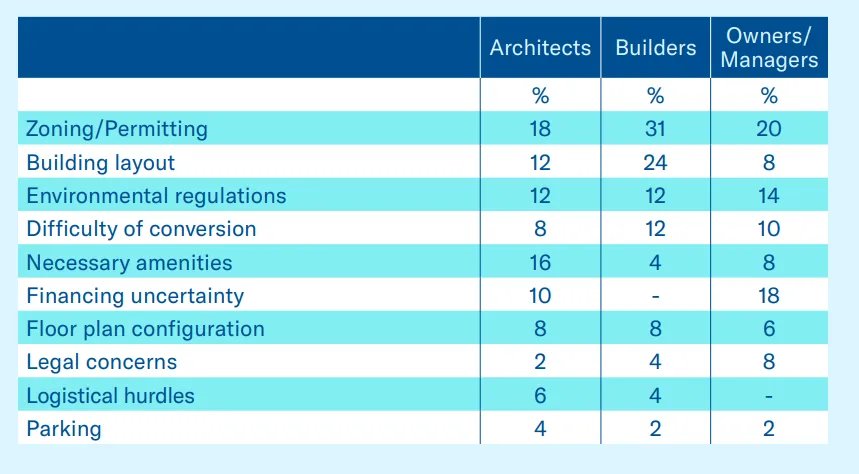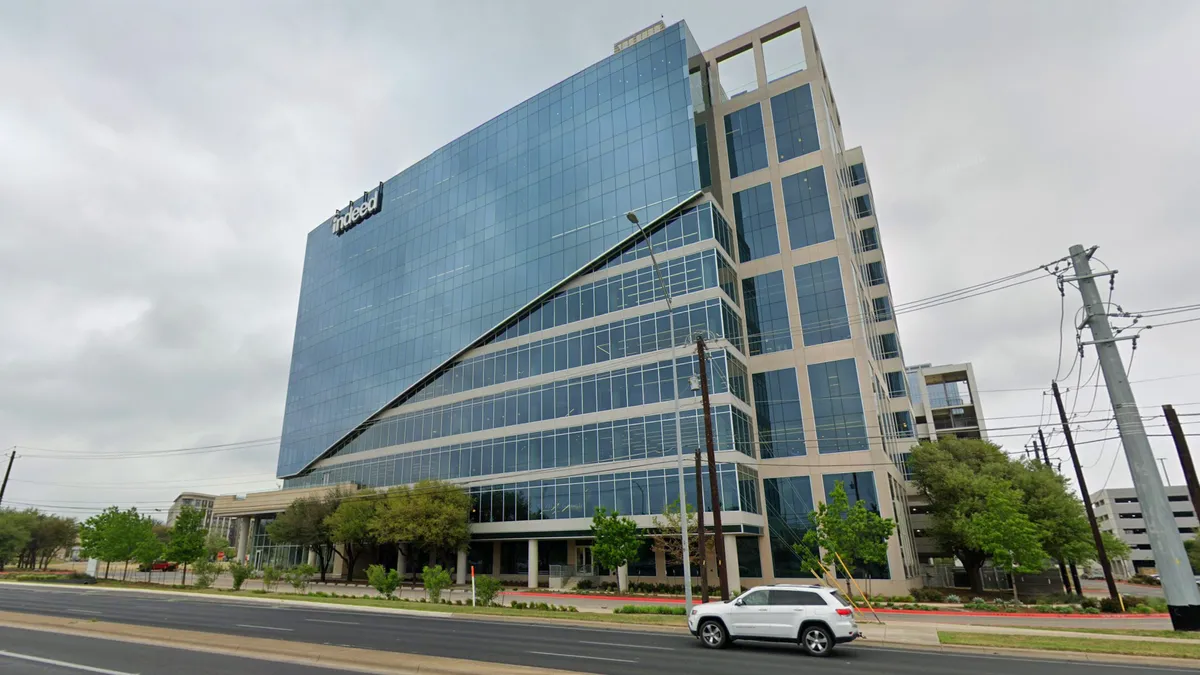Dive Brief:
- Nearly half of commercial real estate experts surveyed by the U.S. Chamber of Commerce believe that government regulations and existing building layouts curtail their ability to transition commercial space into residential units.
- Forty-seven percent of commercial real estate professionals pointed to building layouts as a stumbling block for converting office space to other types of real estate, while 46% cited zoning and permitting hurdles.
- As part of its Permit America to Build program, the U.S. Chamber is urging Congress to enact legislation that will overhaul outdated permitting processes by the end of the summer.
Dive Insight:
The U.S. Chamber’s Future of Office Survey findings, released in June, show that more than two in five commercial real estate professionals point to environmental rules (44%) and floor plan configurations (47%) as deterrents to converting office space for other uses.
The survey, conducted in October 2022, polled 151 commercial real estate professionals, roughly comprising 50 architects, 50 builders and 50 property owners/managers.

“Physical space, as it exists, is hard to convert and … transform into the modern layouts that businesses are demanding. That will take some time to work out. But we’re seeing governmental hurdles in the form of zoning challenges and environmental regulations, and these hurdles are making the process more difficult,” Curtis Dubay, chief economist at the U.S. Chamber of Commerce, said in an interview.
Thirty-one percent of builders, 20% of property owners and 18% of architects said zoning and permitting challenges are the biggest impediment to converting current office space.

Red tape is another hindrance that limits the ability of commercial real estate professionals to transform existing office space.
“It looks like a lot of red tape in the sense of a perception that changes cannot be made. But most cities are reevaluating the red tape and asking what we need to change existing zoning reuse laws that have been in place across many localities. While developers are rightfully saying, ‘if you want us to convert lots of buildings, make it easier for us’, the terminology red tape is a little pejorative,” Mark Grinis, EY Americas real estate, construction and hospitality leader, said in an interview.
Zoning, permitting, logistical and regulatory barriers have galvanized some states to encourage office-to-housing conversions with a slew of development impact fee waivers, tax incentives and measures to streamline zoning changes. San Francisco, for instance, is considering tax credits that aim at reducing future property tax burdens to bolster investments in adaptive reuse projects.
Dubay emphasized the need for smooth communication between state governments and businesses looking to transform office space for other purposes to identify which regulations are the biggest hindrance to conversions. “The state governments responsible for these regulations should be eager to work with these businesses,” he said.
“It’s a self-reinforcing cycle. The more vacant space you have, the less attractive it becomes for people to come to work. You can reverse that cycle and get more people to come back in. You can get more shops and establishments to open. You can be on a faster track back to pre-COVID norms. And that’s why it’s on the onus of the governments to improve and enhance that process,” he said.
Office vacancy rates across the U.S. climbed to a 30-year-high of 17.1% in late 2022, according to data from CBRE, which has stated that owners of older commercial buildings may fare better converting them to other uses if they do not have the amenities that occupants now need to draw employees back to workplaces.
“The gigantic U-turn we had about three years ago has changed the dynamics of how we work, engage, collaborate and connect with employees. So, regulators and even the private sector have been struggling with this new paradigm in terms of how we work and what the function and role of the office building is,” said Grinis of EY. “It’s important to take that context into perspective when we say that regulations that have been in place for about a century now need to be completely reevaluated. As we build on those regulations, it becomes a bread crumb of policy making by way of addressing what the circumstances were at the time. That’s an undertaking.”












